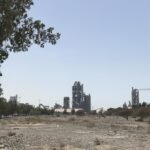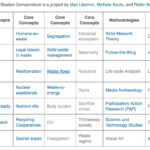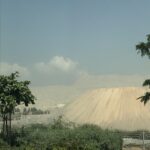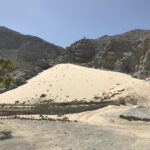Research Journal
-
April 24, 2016
News
Tags:new works / work in progress:
MORE&MORE (2016)
Animations, sculptures, booksFloating Studio for Dark Ecologies (2014)
Work in ProgressDear Climate (2014): Tools for Inner Climate Change,
agit prop posters, meditative audio works,
with Una Chaudhuri, Fritz Ertl, and Oliver KellhammerMesocosm (Times Square) (2014)
Software-driven animationevents lately / soon:
-
March 23, 2016
Jelly Cam and jelly info
I’ve been more disorganized than I thought I’d be on my residency in Houston! That’s by way of saying, I don’t have any extensive reports, but more generally, I’ve been working two prongs: one, learning more about port operations and sidling up close to big ships and black boxes; two, jellyfish – learning about them, conceptualizing a world dominated by these “global citizens” and figuring out inventive ways to eat them.
I had the honor of spending a day with Juli Berwald, a science writer spending a lot of time thinking about jellyfish.
But this post is primarily a link to Monterey Bay Aquarium’s live jellyfish cam, featuring sea nettles (Chrysaora fuscescens).
http://www.montereybayaquarium.org/animals-and-experiences/live-web-cams/jelly-cam
If the screen is black, try Sea Nettle Jelly Cam After Hours
-
February 26, 2016
the gulf is a dead zone
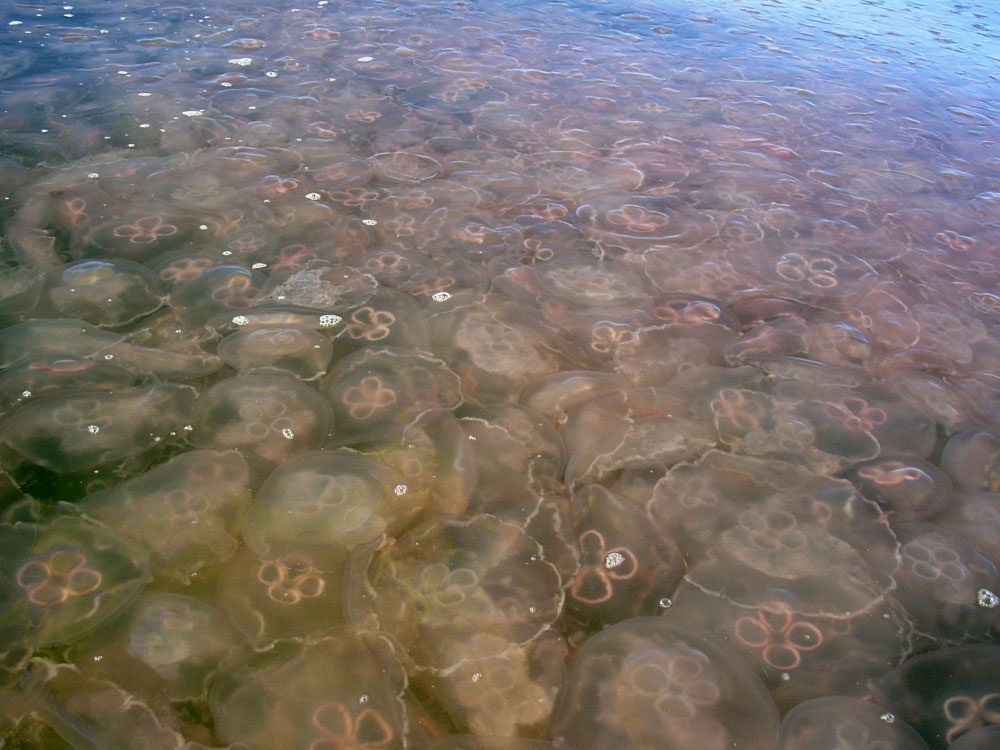
jell hell. Credit: Dauphin Island Sea Lab In the Gulf of Mexico’s densest jelly swarms, there are more jellyfish than there is water. More than 100 jellies may jam each cubic meter of water. To kick the jellies off, I found on the NSF site a great primer on jellyfish:
Gulf of Mexico

THE BIGGEST DEAD ZONE IN THE WESTERN HEMISPHERE
The white sands and sparkling emerald waters of the Gulf of Mexico’s beaches belie a dirty little (open) secret: a huge Dead Zone that is devoid of almost all life except jellyfish is expanding in the Gulf of Mexico. During the summer of 2008, the Gulf’s Dead Zone covered about 8,000 square miles, about the size of Massachusetts. It is expected to soon reach about 10,000 square miles.
CREATION OF THE DEAD ZONE
The Gulf’s Dead Zone is produced every summer by tons of fertilizer, sewage and animal wastes that are continuously dumped into coastal waters by the Mississippi and Atchafalaya Rivers. These pollutants do their dirty work by fertilizing huge algae blooms that decay through a process that robs Gulf waters of oxygen. Most sea creatures flee or suffocate to death in the Dead Zone’s oxygen-starved waters, leaving highly adaptable jellyfish to proliferate unrestrained by predators and competitors and to gorge on the Gulf’s bounty of plankton.GROWING JELLYFISH POPULATIONS
The most abundant species of jellyfish in the Gulf are the sea nettle and moon jellyfish, which typically swarm over hundreds and perhaps even thousands of square miles each summer. Studies show that these species became significantly more abundant and expanded their ranges during the 1980s and 1990s. Moreover, since 2000, the Gulf has hosted invasions of several non-native jellyfish species, including the Australian jellyfish.Signs that the Australian jellyfish is satisfied with its adopted Gulf home include its tendency to swell from its usual fist-size to the size of dinner plates in the Gulf. In addition, the Gulf’s population of Australian jellyfish is steadily growing and expanding its range; this species recently reached North Carolina.
– https://www.nsf.gov/news/special_reports/jellyfish/textonly/locations_gulfmexico.jsp
Is it hyperbole to say devoid of almost all life? I mean, people still fish, there are still dolphins. Just not very much of anything.
-
February 26, 2016
Making the best of it 2016
New year, new thread, I’m on sabbatical from ITP, and starting almost 3 months of deep research out of town – in the Gulf of Mexico, and in Minneapolis for a new umbrella project called Making the Best of It. Here’s a nano description:
Making the Best of It is the umbrella concept for a series of regionally site-specific pop up food shacks and community dinners that feature a climate-change enabled (and often unwanted) edible indicator species, in order to engage publics in tastings and conversation about the risks of climate chaos, our business-as-usual food system, and the short term food innovations at our disposal.
March – I’ll be at CENHS at Rice University
April – Minneapolis, through northern.lights.mn
May – Rising Waters Confab, Rauschenberg residency Program, Captiva Island
In the Gulf, I’m focused on jellyfish as an edible signal species.
In Minneapolis, a team of awesome artists (Valentine Cadieux, Aaron Marx, Sarah Peterson) and I are working with Northern Lights to produce 13 months of programming around eating dandelions.
I’ll be logging research and development on jellyfish and the Gulf. Oh, and hopefully the Port of Houston. I’ve been working on the firewall of maritime shipping and “Harmonized System” code that keeps us from the oceans. there’s a show up at bitforms of this work Feb 14-Apr 3. It’s called MORE&MORE.
-
May 13, 2015
summer is coming
Tags:“Blogs and social media have allowed us to talk to ourselves (but not to reach out beyond the left bubbles); they have also generated pathological behaviours and forms of subjectivity which not only generate misery and anger – they waste time and energy, our most crucial resources. Email and handhelds, meanwhile, have produced new forms of isolation and loneliness: the fact that we can receive communications from work anywhere and anytime means we are exposed to work’s order-words when we are alone, without the possibility of support from fellow workers.
In sum, the obsession with the web, its monopolisation of any idea of the new, has served capitalist realism rather than undermined it. Which does not mean, naturally, that we should abandon the web, only that we should find out how to develop a more instrumental relationship with it. Put simply, we should use it – as a means of dissemination, communication and distribution – but not live inside it. The problem is that this goes against the tendencies of handhelds. We all recognise the by now cliched image of a train carriage full of people pecking at their tiny screens, but have we really registered how miserable this really is, and how much it suits capital for these pockets of socialisation to be closed down?”
— Abandon hope (summer is coming) | k-punk -
April 20, 2015
Calling all life coaches
Calling all Life Coaches!
Looking for hospice workers for the human species.
Applicants must submit brief (under 1 page) essay on why s/he feels qualified for the job.
Modest pay.
-
January 31, 2015
Materials research
Tags:We are starting The Fungus Among Us, a 7 week course at ITP.
One of my goals is to build a materials library to test– species differences
– color (in the substrate, after the material has grown)
– sealants
– pliability
– thinness
– carvabilityusing
– natural dyes,
– varnishes,
– fibers,
– beeswaxgrowing in burlap – shaped
- smeared onto burlap (blended first w/substrate)
- impregnate burlap with just the grain spawn
use bamboo skewers to create armatures
A slurry in a 3D printer nozzle
What other alkaline substrates are useful besides coffee chaff and oat straw?
How thin can the material be?
How flexible?
What organic materials can be introduced into the substrate that extend its elasticity, density, porosity?Can you grow more mycelium on “dead” (baked) inoculated substrate? This would allow you to repair or add new parts later
Are there protocols for this kind of r + d?
-
January 13, 2015
Fungus gone wild
Tags:Left these test bricks for 30 days, and came back to living edible architectural edges. They were a bit rubbery but delicious oyster mushrooms (though they look more like coral reefs):
-
October 7, 2014
Future Topophagies
Tags:Here are some images from a workshop I co-organized with Valentine Cadieux and Steve Dietz through the University of Minnesota and Northern Lights in Minneapolis, MN at the end of September 2014. The workshop was staged in conjunction with the show thinking making living at the Nash Gallery at the U of MN. We couldn’t have run this without the generous coordination of Christine Baeumler. And I’d have been helpless without Valentine Cadieux. It was an exciting, fast, and very productive process. I *think* everyone had a good time and got a lot out of the experience.
We drew from a set of seven constraints, imagined future picnics based on those constraints, and at the end of day two, prototyped the food and packaging we’d use if we were to make such a public event. I will be writing up the scenarios shortly.
While these participants came from art, social science, history, ecocriticism, architecture, biology, climatology, and politics, I think you could run this workshop with a wide variety of people and publics, and turn up relevant, and resonant results.
Participants: Stephen Sebestyen, Laura Bigger, Teréz Iacovino, Matthew Tucker, Sarah Peters, Cam Gordon, Tracey Deutsch, Karen Moss, Sandra Teitge, Aaron Dysart, Andrea Steudel, Molly Balcom Raleigh, Christine Baeumler, Kenny Blumenfeld, Shanai Matteson, Sarah Nassif, Molly Reichert, Ryan Seibold, Bunmi Odumuye, Emily Stover, interns Andrea, Marie, and Della, and Janaki Ranpura (in spirit and email)
Images: M Zurkow, V Cadieux and Sarah Nassif.
More images by Laura Bigger here.[FAG id=3932]
